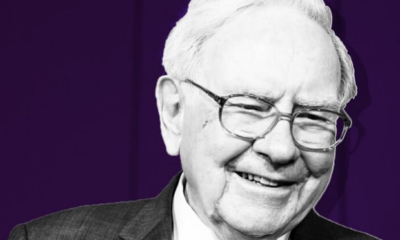Success Advice
Advice From The Worlds Top Billionaires

Business advice from The Worlds Top Billionaires: Sheldon Adelson, Bill Gates, Steve Jobs, Richard Branson, Charlie Munger, Donald Trump, Warren Buffet, Jim Pattison, Charles Koch and Sunil Mittal.
Advice From Billionaire’s
Sheldon Adelson (Net Worth 3.4 Billion) – Just do things in life the way other people dont do things, Change the Status Quo and then you’ll succeed.
Bill Gates (Net Worth 50 Billion) –Its surprising that the fundamentals of business are pretty straight forward, you should be trying to take more in as an income than you spend in your costs.
Warren Buffett (Net Worth 47 Billion) – Run this business like its the only business your family will own for the next 100 years, dont measure it by the earnings that where made in that quarter of the year, what gives it competitive advantage over time and if its widened or narrowed.
Richard Branson (Net Worth 2.5 Billion) –You have to be good with people, you have to be very good at finding wonderful people to run your companies, I think early on I realized, If I can run one company well I can run any company.
Steve Jobs (Net Worth 5.1 Billion) – Someone long ago told me manage the top line which is your strategy, your people and your products and the bottom line will follow.
Charles Koch (Net Worth 17 Billion) – Attitude toward work is critically important for developing yourself and to keep healthy and happy.
Donald Trump (Net Worth 2 Billion) – There is no such thing as too much exposure or over exposure as they say.
Jim Pattison (Net Worth 4.2 Billion) – The number 1 objective I have isto have a good time, the second objective is to make some money. If you work hard, use alot of common sense and have a passion for what you believe in and like to do you will be very successful.
Charlie Munger (Net Worth 1.7 Billion) – The safest way to get what you want is to preserve what you want. You want to deliver to the world what you yourself would like to buy on the other end.
Sunil Mittal (Net Worth 12 Billion) – If you are caught between speed and perfection always choose speed and perfection will follow because you can never wait for the perfect positioning, in business you dont have the time, espescially if you are small or just starting out.
Did You Know
How Skilled Migrants Are Building Successful Careers After Moving Countries
Behind every successful skilled migrant career is a mix of resilience, strategy, and navigating systems built for locals.

Moving to a new country for work is exciting, but it can also be unnerving. Skilled migrants leave behind familiar systems, networks, and support to pursue better job opportunities and a better future for their families. (more…)
Life
10 Research-Backed Steps to Create Real Change This New Year
This New Year could finally be the one where you break old patterns and create real, lasting change.

Every New Year, we make plans and set goals, but often repeat old patterns. (more…)
Change Your Mindset
The Silent Skill That Makes People Respect You Instantly
What truly earns respect and why most people go about it the wrong way

Everybody craves respect but not everyone earns it. Some people believe that a title, years of experience, or a position of authority automatically entitles them to respect. (more…)
Entrepreneurs
The Essential Skills Every Entrepreneur Needs In 2026
Success in the digital age isn’t about luck. It’s about mastering the skills that separate dreamers from doers.

When I was 22 years old, I started my first side hustle as a ghostwriter. (more…)
-

 Entrepreneurs4 weeks ago
Entrepreneurs4 weeks agoThe Essential Skills Every Entrepreneur Needs In 2026
-

 Change Your Mindset3 weeks ago
Change Your Mindset3 weeks agoHow to Turn Your Mind Into Your Greatest Asset (Instead of Your Enemy)
-

 Change Your Mindset3 weeks ago
Change Your Mindset3 weeks agoThe Silent Skill That Makes People Respect You Instantly
-

 Life2 weeks ago
Life2 weeks ago10 Research-Backed Steps to Create Real Change This New Year
-

 Tech2 weeks ago
Tech2 weeks agoWhat’s in a Name? How to Get Your Domain Right
-

 Did You Know1 week ago
Did You Know1 week agoHow Skilled Migrants Are Building Successful Careers After Moving Countries

























3 Comments